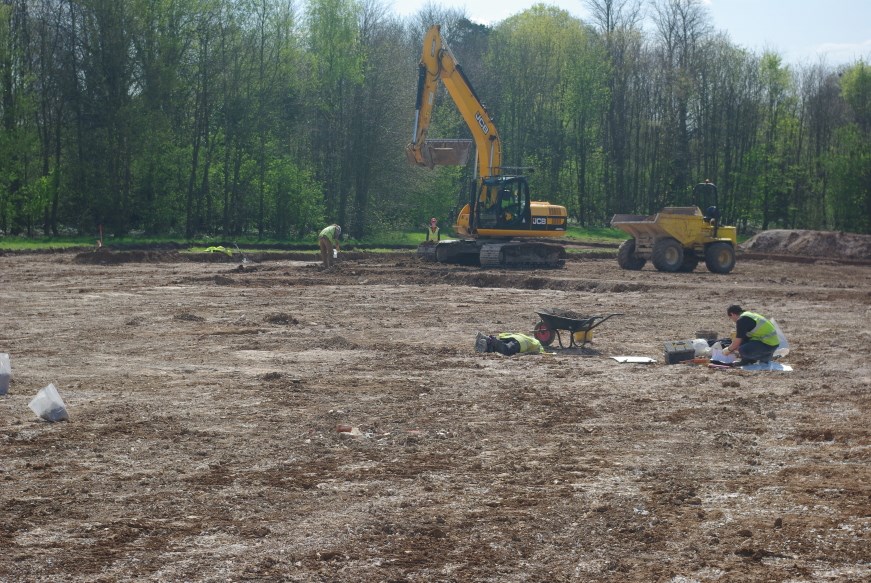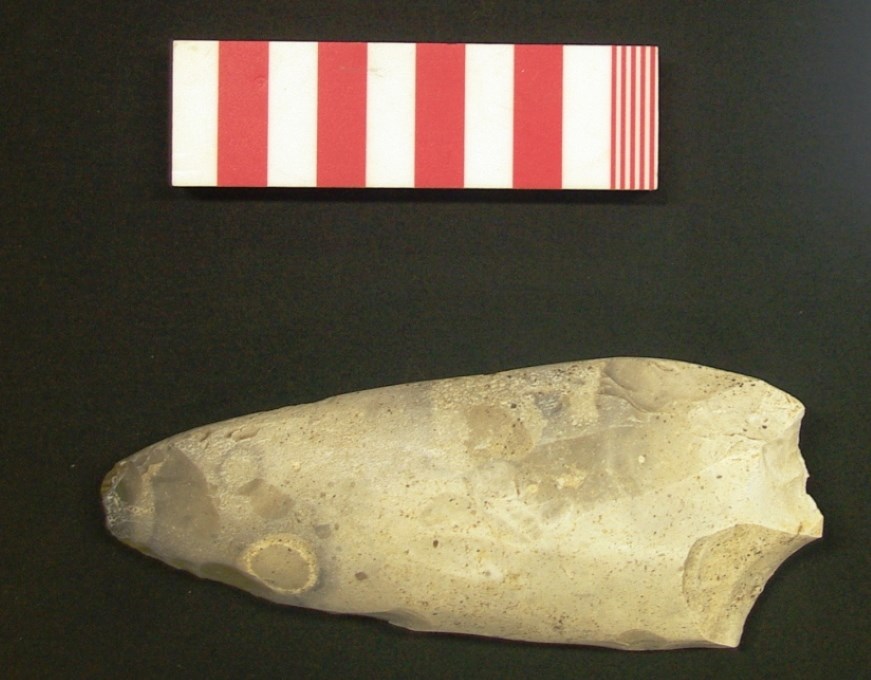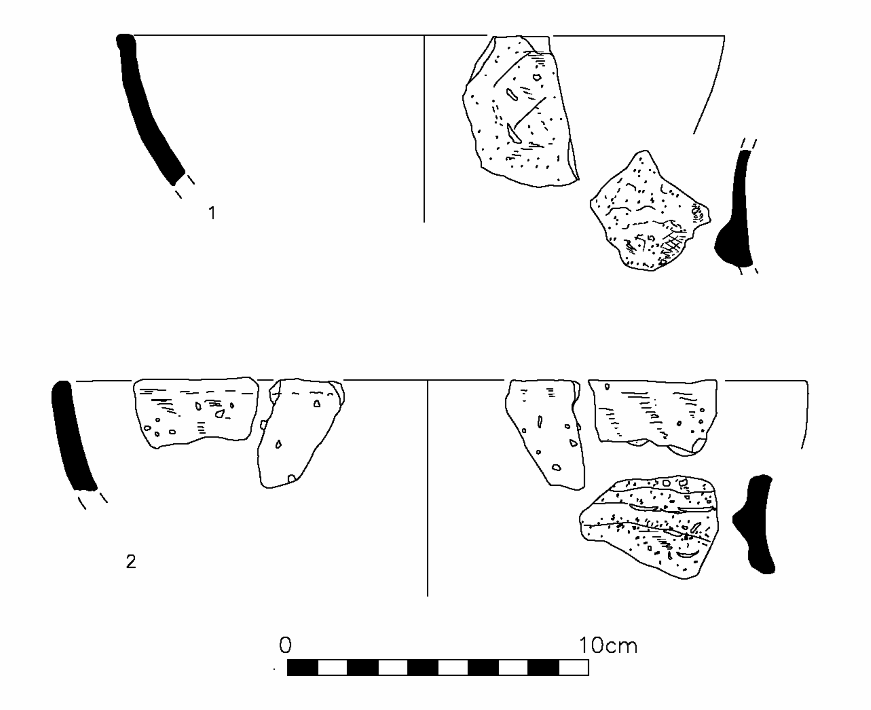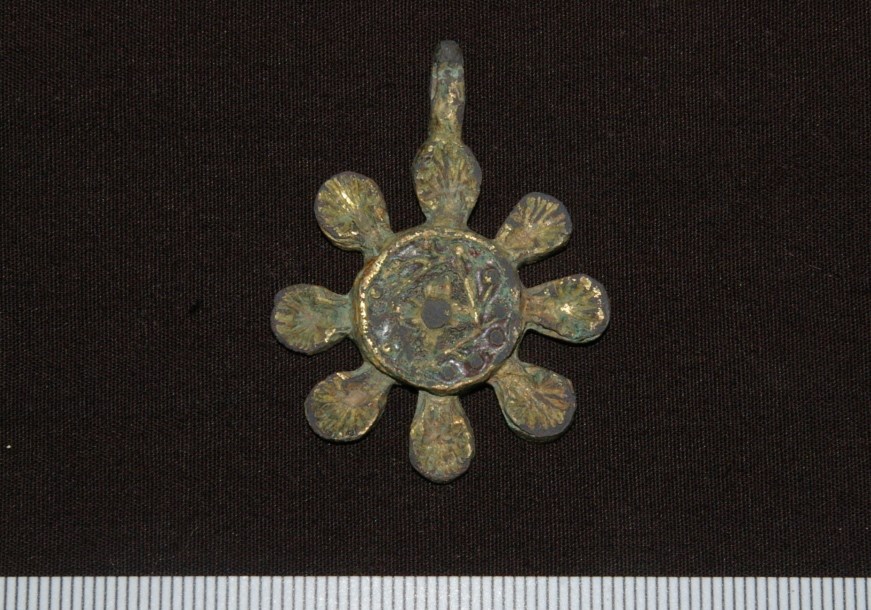Southampton Archaeology Case Studies – Pitt Manor
Archaeological excavations at Pitt Manor, Winchester. A large-scale rural site, enabling the development and expansion of Winchester.
A pre-commencement requirement for an evaluation was requested by Winchester City Council Planning Department on a large area of agricultural land near Pitt, Winchester, in accordance with the National Planning Policy Framework. Southampton Archaeology was commissioned to undertake the large-scale archaeological evaluation and any further work.
A Written Scheme of Investigation (WSI) was written and approved by the Planning Archaeologist. It detailed a regular evaluation trench pattern that would evaluate 5% of the site, providing good coverage of the site and allowing the Planning Archaeologist to understand the archaeology. The WSI also included a summary of the archaeological and historical research of the area, and how the development would impact the heritage asset. This included data from the Historic Environment Record (HER) provided by the Local Planning Authority. A total of 52 evaluation trenches were dug and archaeologically significant features and deposits were found. This included flint flakes found in the colluvium and a pit with prehistoric pottery. A report was submitted to the Winchester City Council Planning Department summarising the results of the evaluation. The Planning Archaeologist considered the paleoenvironmental potential of the site to be high and having reviewed the other archaeologically significant features and deposits, decided that a condition for an archaeological excavation was to be placed on parts of the site. A WSI was written detailing the mitigation strategies, this included the method of the excavation and sampling requirements. Bulk and monolith soil samples would be taken and analysed by our team of specialists to better understand the prehistoric environment of the area. A targeted trench plan was drawn up that focused on areas that had the highest potential for revealing palaeolithic deposits for analyse. The WSI was approved by the planning archaeologist and excavation commenced on the site.

View of excavation
Prehistoric pottery and flint tools were recovered showing that there was a short-lived period of activity in the Neolithic period. A carefully targeted program of environmental sampling retrieved charred hazel nuts and charcoal. Radiocarbon analysis on the hazelnut shells and charcoal recovered indicated activity in the Early Neolithic (3645-3370 ca BC). Although the Neolithic is normally recognised as a time when farming developed the evidence suggested the people on the site spent much of their time hunting and gathering wild produce, on the margins of the now-dry watercourses that cross the site.

Neolithic polished axe

Illustrations of the Neolithic pottery
The excavations supported the cartographic and documentary research showing that the site was then used for agriculture for thousands of years. For much of this time the site was perhaps sheep pasture, but the presence of Middle to Late Iron Age pottery sherds pointed to manuring of fields at that time, followed by fewer finds from the Roman and Medieval periods, before a rise again in the 18th century. Several finds were recovered including a pilgrim’s pendant.

13th/14th century gilded pendant found in the topsoil. The heavy gilding suggests this was a high-status object for a wealthy owner. The scallop shell decoration may be a reference to the pilgrimage to Santiago de Compostela, which became popular in the 12th century.
The early 20th century saw a major change. Historic records show the site was occupied by the Army in 1914–15, and there were features relating to roads, huts, drainage, and rubbish disposal. In 1914 Winchester became the focus for several army camps where troops were trained before the short journey to Southampton, the main embarkation port for France and other theatres of war. The soldiers occupied the site until they were rushed to France in January 1915. A War Office map locates the Headquarters buildings on the site, together with a Field Ambulance and a Cyclist company. The camp later had other uses, including a horse hospital. Two large rubbish pits were found which contained pottery, glass, and elements of the huts. After the removal of the camp the site was deep-ploughed and returned to the owner.
Digital survey techniques were essential over such a large area and our 3D mapping software allowed us to digitally record and georeference the positions of finds, locations of soil samples and archaeologically significant deposits and features.
The archaeological work on this large rural site helped to continue the development of the area and gave us two snapshots of life near Winchester, separated by some 4600 years. The first gave us a glimpse of life when farming was first introduced to the area, the second has revealed the nitty-gritty of life in a First World War Army camp. Southampton Archaeology has a well proven track record of dealing quickly and efficiently with large rural sites. We welcomed this opportunity to aid a developer in meeting their planning conditions while deepening our knowledge of the prehistoric and war time history of the Winchester area. Our report that detailed our findings along with georeferenced plans and specialist’s reports was submitted to the LPA. The archaeological condition was cleared along with other conditions and the developer built 200 dwellings, a 200-space park-and-ride with related access roads, landscaping and play facilities.


